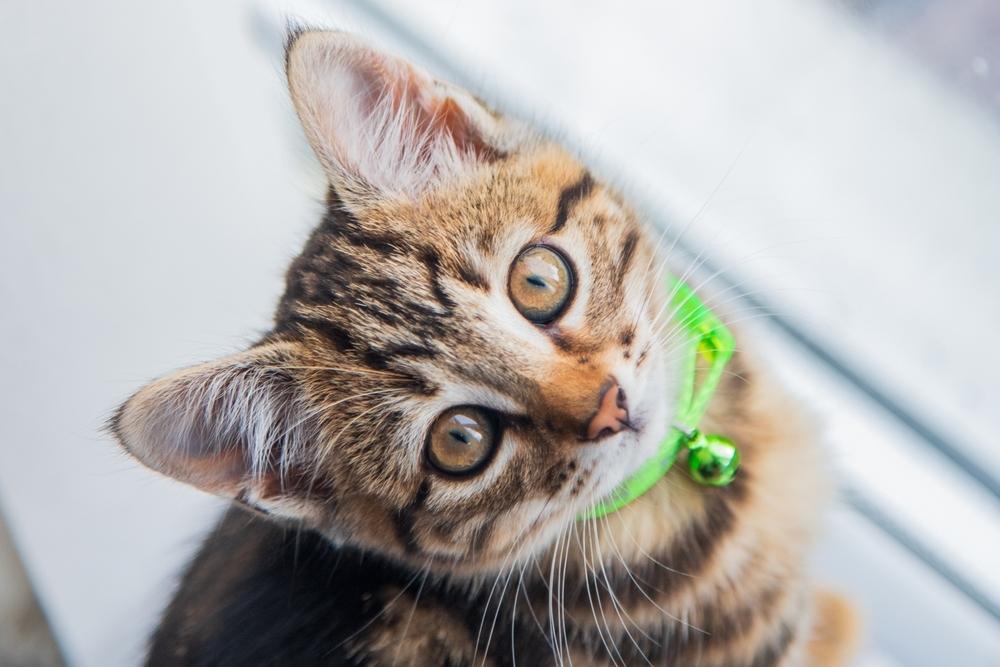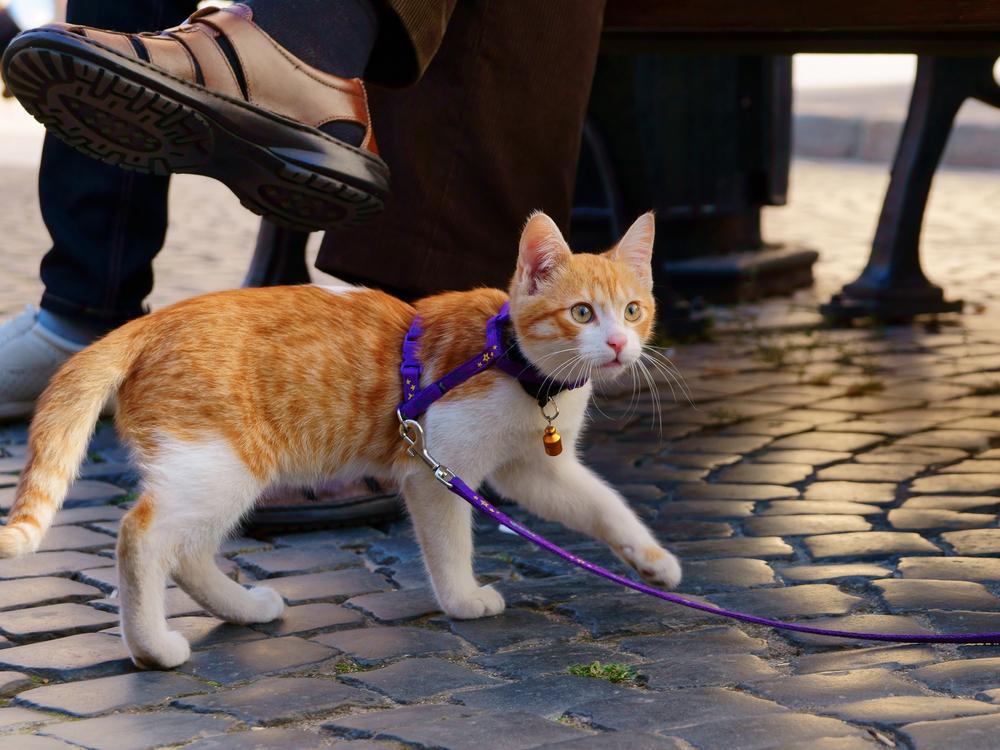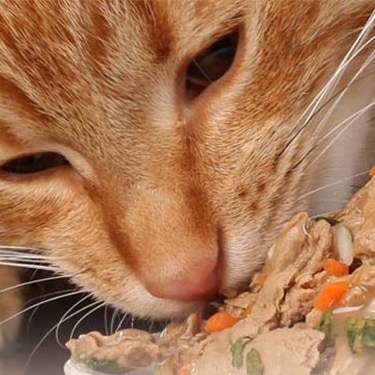

Think cats can't be trained? Think again — kittens have just as much brain power as dogs and are constantly learning. Teaching your kitten basic commands, such as how to sit, is not only surprisingly simple but also a great way to strengthen your bond and impress your friends. Training also provides a positive outlet to channel play attacks by high-energy kittens, helping shape good behavior that can last a lifetime.
Training is a form of feline enrichment that helps reduce stress and supports your kitten's emotional and physical well-being. Understanding how to train a kitten to sit, come when called or perform other natural behaviors comes down to getting to know your kitten and learning what kind of reward they love best.
Your Guide to Kitten Command Training
Kittens learn in the same way as puppies: by understanding cause and effect. However, not all kittens are food-motivated and may respond better to a feather toy, for example. Even if they love treats, treats should make up less than 10% of a kitten's daily calorie allowance, plus, tiny tummies can only hold so much. Kittens also have short attention spans, so keep training sessions brief — about five minutes at a time — and repeat them several times throughout the day.

How to Train a Kitten to Recognize Their Name
Training begins with teaching name recognition. This will help as you move onto other commands, as well.
Pay attention to how your kitten responds to different sounds when choosing a name. Percussive consonants, like "k," "ch" or "p," often catch a kitten's attention. Names that end in an "s" may also strike a chord. Short, one- or two-syllable names tend to be most effective. Some kittens even seem to choose the name they like best, so try out a few to see what gets the best reaction.
Cats tend to respond better to higher-pitched voices. Try testing out the potential names by calling them out in a bright, upbeat tone.
Partner their name with a reward they love. For example: "Treat time, Karma." "Want to chase the feather, Karma?" Consistently pairing their name with their favorite activities helps kittens learn their name — and pay attention when they hear it.
Once your kitten responds to their name, use it consistently during training.
How to Train a Kitten to Come When Called
Kittens train themselves to come when they hear you take the can opener out of the drawer or the food bag rattle. Use this to your advantage by partnering "come" with meals or playtime. "Come" should prompt purrs — never fearful experiences. So, only use the "come" command for things they like during training.
This command works great for emergencies, such as if they're near a hazardous situation (like broken glass on the floor).
Say, "Karma, come!" in a high-pitched tone.
Let them hear you fill the bowl.
As soon as they come, offer the meal.
How to Train a Kitten to Sit
Use lure training with a treat or toy, such as a feather, to persuade your kitten to sit.
Show them a favorite toy or treat reward.
Hold it slightly above their nose.
Say, "Karma, sit," and move the lure up over their head. To avoid falling over while watching it, they must sit.
Once they sit, give them the reward.
Soon, your kitten won't need the lure to sit on command. Try asking your cat to sit on their cat tree before opening a door to prevent escape attempts.
How to Train a Kitten to Stay/Wait
Training a kitten to stay or wait helps keep them safe, such as if they're attempting to dash out the door. Clicker training works best with this command.
Ask your kitten to sit. By this stage, they should recognize the verbal command and respond without needing a treat or lure.
Say "wait" while holding a treat within view for 30 seconds.
If they move before you give the okay, close your hand around the treat. Ask them to sit, say "wait" and show them the treat again.
When your kitten stays in position for the full 30 seconds, click and reward with a treat. This may require several repetitions over multiple days to build consistency. Gradually reduce the treats over time so your kitten can respond to the "wait" command even without seeing a reward.
How to Train a Kitten to Respond to "No"
Interrupt unapproved behaviors, such as scratching furniture, with a low, growly "no" or a short "HISS!" Then, praise them and redirect scratching to an approved target, such as a scratching post. Depending on the kitten and the unapproved behavior, withholding a reward may also work. If your kitten bites during play, for example, a 60-second timeout teaches them biting stops the fun.
How to Train a Kitten to High Five
Kittens use their paws to explore their world. "Waving" with a paw and tapping/touching objects comes naturally. You can either lure the behavior with a feather, or "capture" the pawing when it naturally occurs with a click-reward.
Use the feather or other favorite toy to get your kitten's attention.
As they raise their paw to follow the lure, bring the lure to the opposite palm. Their paw should follow.
As soon as it touches, say "high five!"
With repetition, simply holding up your palm and saying "high five" should cue your kitten to perform the action.

How to Train a Kitten to Wear a Leash
The idea of walking your cat may give you pause, but this "liberation training" allows your cat to explore the backyard or visit other places without the usual risks. Supervised outdoor time on a harness and leash offers a safe way for them to enjoy the enriching sights, sounds and smells of the outside world. Always attach the leash to a halter or harness, rather than a collar, to prevent injury to fragile kitten necks.
Not all kittens will respond positively to leashes and harnesses. Pay attention to your kitten's reactions, and never force the matter. Go at their pace and respect their comfort level.
Let your kitten sniff, paw at and play with the leash and harness indoors.
Put on the harness. Lure your kitten to move with feather toys.
Once they're used to moving in a harness, attach the leash. Let them drag it around and play with it.
Pick up the leash and let your kitten lead you. Redirect them with gentle tugs when necessary. Kittens don't respond to pulling at the leash like dogs do, so don't apply too much pressure.
Often, the biggest challenge in training kittens is practicing patience and consistency. Kittens have short attention spans, limited tummy capacity for treats and a natural resistance to coercion. Try not to think of this as stubbornness — it just means you haven't yet found the proper motivation for your kitten. To minimize distractions, train at the same time and in the same quiet place, away from other pets and people, each day. This will help your kitten learn to anticipate and enjoy the routine.
Kittens learn best when you identify their natural behaviors, then reinforce them with a name and a reward. For example, if your kitten doesn't naturally perform a "high five," try teaching a paw "wave" on command instead. Match the training with what works best for your kitten's personality and preferences. For problem behaviors, like biting or elimination issues, don't hesitate to seek professional support from your veterinarian and/or a board-certified behaviorist.
Training doesn't stop when your kitten grows up. The more you practice with your kitten as they grow into adulthood, the more benefits you'll notice. Mentally engaged cats are typically happier, better-adjusted pets — and that means happier humans, too.






















